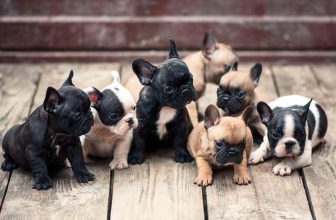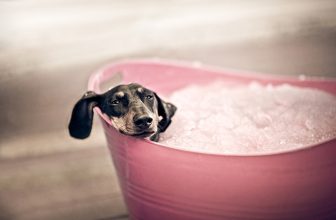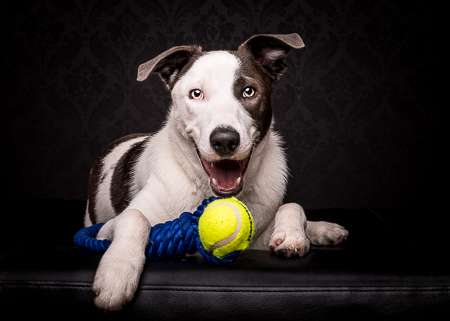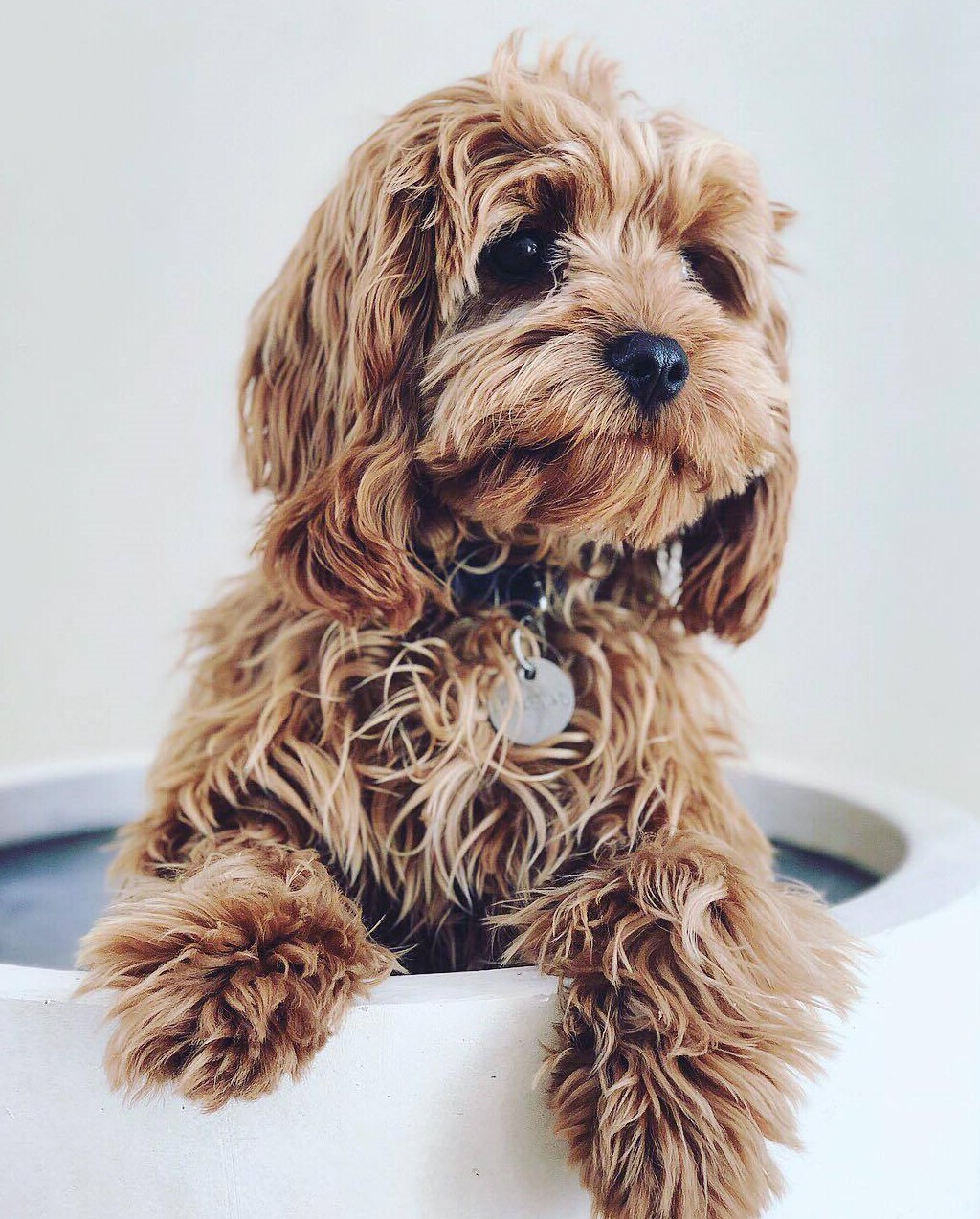
Cavoodles (also known as Cavapoos or Kavoodles) are thought to have been first bred in the 1950s, but over the last 10 years, the popularity of this Cavalier King Charles Spaniel/Poodle mix has skyrocketed!
This lovable hybrid tops the charts as the most popular small breed in Australia. In fact, the demand is so high that Australian breeders have doubled their population in the last four years to meet the need.
I also found out Cavoodles are one of the top modelling dogs, and one of the top breeds on Instagram!
Australian Cavoodle “Bella” has featured in numerous photoshoots for Peter Alexander Sleepwear:

Besides being downright adorable, these curly mutts are well-suited to almost any lifestyle. The Cavapoo’s energetic and loving temperament keeps single owners entertained, while their small stature and gentle nature makes them great for apartment living or families with children.
Best of all, Cavoodles hardly shed, which makes them great if you’re sensitive to pet hair or would like your Dyson to last longer!
Cavoodle History
The modern-day Cavalier King Charles Spaniel is a descendant of the Toy Spaniel, a popular companion of affluent women during the Elizabethian era. The Cavalier earned it’s regal title from being the favourite breed of King Charles II, who thought so highly of the breed he included their acceptance into law:

“History tells us King Charles II was seldom seen without two or three spaniels at his heels. So fond was King Charles II of his little dogs, he wrote a decree that the King Charles Spaniel should be accepted in any public place, even in the Houses of Parliament where animals were not usually allowed. This decree is still in existence today in England.”
The Cavalier King Spaniel Club Website
The Poodle, though commonly thought to be a French creation, is believed to have originated in Germany in the late 16th century. Contrary to their modern portrayal as a “frou-frou” dog, the Standard Poodle was traditionally used for retrieving waterfowl due to their obedient nature and thick coat which protected their skin from frigid water and underbrush.
Over the years the Standard Poodle was bred down in size to be used as both a companion animal and a truffle-sniffing dog since their smaller size made them less likely to damage the valuable fungi.
Cavoodles bring the positives of both breeds into one of the most perfect canine companions, which is why they’ve become so well-loved in Australia.
Is a Cavoodle right for you?
My guess is, if you’re reading this thinking of adopting a Cavoodle puppy, then the answer is very likely a yes as long as you’re willing to put in some time, effort, and regular grooming. The small stature and gentle nature of Cavoodles makes them an excellent choice for most of us.
Especially if you fit into one of these categories:
- Families with small children
- Single people
- Elderly people
- Moderately active people
- Homes with multiple pets
- Those who live in apartments or small homes
- People with allergies
Health Concerns
Since Cavoodles are a crossbreed, they are generally healthier than their purebred parents. That said, they can still be genetically disposed to certain breed-specific illnesses.
Below are Cavoodle health concerns to be aware of, but keep in mind a good diet can keep most at bay:
- One common issue with Cavapoo is ear infections caused by trapped moisture due to their floppy ears. Plucking their inner ear hairs and drying their inner ear after bath-time or beach-time can help prevent this condition, as can a good diet (which I’ll cover shortly).
- Overeating, the wrong diet, and lack of exercise can cause a Cavapoo to pack on the pounds. Left unaddressed they can become obese.
- Like the poodle, this breed is prone to gingivitis and tooth decay, which can lead to poor health in later years. Diet, again, is a key factor in this (discussed later), but it’s common for Cavoodle owners to get in the habit of regular brushing of their dog’s teeth, ideally daily. Your vet would likely recommend dental chews in addition to brushing, most often Greenies, but although these are said to break off tarter “naturally” I remain skeptical of this Mars product – I wouldn’t rely on Greenies alone for dental health. Your Cavoodle would also benefit from a yearly dental cleaning at the vet to take care of plaque build-up under the gums which you cannot reach with a toothbrush alone.
- Eye defects (including cherry eye and cataracts) are common in Spaniels and can sometimes be seen in the Cavapoo as well, although this seems to be less likely.
- Heart Disease and Dilated Cardiomyopathy (DCM) are leading causes of death for toy poodles. This illness can trickle down to the Toy Cavoodles, though statistically speaking the odds are much lower due to mixed breeds having a wider gene pool. Although these diseases can be genetic, they can also be diet related – not surprising given how bad some of the dog food brands are in Australia. DCM has been linked to taurine deficiency, but in recent years this amino acid has become a requirement in a complete and balanced dog food.
What’s the best dog food for Cavoodles (in Australia)?
A benefit of owning a Cavoodle as a smaller breed is they’re cheaper to feed than medium/large breeds. But that said, when we adopt a puppy we almost always underestimate the cost of feeding them a healthy diet.
The reason for this is we see those big bags of dog food in the supermarket which can feed our pups for weeks, without realising those dog foods are cheap for a reason and can cost $$$$s in vets bills in several years time as poor health takes a toll.
If, like most of us, you’re on a budget, then aim to choose a couple of dry foods as a “base diet”. Personally I rotate between a number of brands to add variety and ensure my dog is tolerant of different types of food.
That means the best dog food for your cavoodle might not be one brand, but a few brands, and a mix of dry food, wet food, and fresh/raw foods.
To address dental health, raw meaty bones are well worth considering. The gnawing action is how dogs in the wild maintain impeccable dental health, which is rarely the case for our domestic dogs. Poor dental health leads to periodontal disease, often from a young age, and often going unnoticed. This can lead to poor organ health over time, so it’s definitely something you must address – always keep an eye on the condition of your Cavoodle’s teeth.
If you’re unsure about feeding meaty bones, or raw for that matter, then I can’t recommend the book Work Wonders by Australian vet Tom Lonsdale enough. It will change the way you view feeding a dog in a few short, easy to read chapters.
For a Cavoodle puppy you should always feed a Puppy Formula or All Life Stage formula if you’re feeding a commercial food. Puppies require more nutrients to support growth than adult and senior dogs.
If you want an affordable base diet then have a read of this guide, and if you want to know what I consider the best dog foods in Australia then here’s the best rated list.
Training Treats for Cavoodles
There are no special requirements when it comes to training treats for Cavoodles, but always consider their health. Most dog treats in Australia aren’t very healthy, and it’s not as if they’re heavily regulated for the health and wellbeing of your dog.
Boiled and diced chicken (or similar meat) is as good a treat as any and will offer your Cavoodle excellent nutrition as they develop. Human grade chicken is cheap and easy to buy, and easy to freeze in handy bags for training sessions.
If you want commercial recommendations, I personally find ZIWI Peak and Eureka excellent options. Being “complete and balanced” dog foods made from whole-prey ingredients they’re a wonderful choice for the health of your dog, and being air-dried means they double as excellent treats. They also work out cheaper than buying “treats” of a similar quality.
Life Span
The average life span of a Cavoodle is 10-14 years.
What age do Cavoodles stop growing?
Your cavoodle will grow the most during their first 6 months of life, but will typically reach full size within 9 months to 1 year.
Just keep in mind they’ll still act and behave like a puppy for the next decade or so…
Price Range
Prices can range from $1500 to over $3000 depending on gender, age, appearance, lineage, and breeder preference.
Tips from Show Breeders
I reached out to a few Cavoodle show breeders for their best tips. Here you go:
- Use only stainless steel or ceramic bowls to feed and water your Cavapoo. Plastic dishes, even BPA-free ones can cause unsightly nose discolouration. Furthermore, plastic bowls are prone to microscopic scratches which can harbor bacteria (even after repeated washing), and causing allergic reactions.
- Giving your Cavoodle filtered water can decrease and even completely eliminate tear-staining. Persistent stains will require a professional strength stain remover like Tropiclean SPA Tear Stain Remover.
- A high-quality and balanced dog food will keep your pup looking and feeling their best. We recommend Orijen 6 Fish Grain-Free Formula Dry Dog Food because it consists entirely of lean meat and antioxidant-filled fruits and veggies. Unlike other popular dog foods, Orijen contains no fillers or chemical preservatives! The fatty acids in the fish will make your Cavapoo’s coat shiny and luxurious!
- Nature’s Specialties Almond Crisp Shampoo is a cult favorite among Cavoodle breeders and groomers! This gentle shampoo brightens any color coat, and since it is concentrated it lasts for ages! Keep in mind you will need to dilute this shampoo 32:1.
- Shampoos strip hair of their natural oils, leaving the coat frizzy and unmanageable. Combat the frizz with a good quality leave-in conditioner like Chris Christensen Ice on Ice Conditioner with Sunscreen, which will detangle and protect their coat from sun bleaching.
What do owners have to say about their Cavapoo?
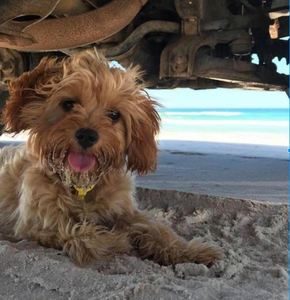
“Choosing a Cavoodle was the best thing we ever did, at first we were a bit concerned that they were too expensive and as we are young, we had to do quite a bit of saving up. But she is honestly the best dog.
She’s so cuddly and supportive. She knows when you’re upset and she comforts you. She is such low maintenance and doesn’t shed hair which is perfect for us living in an apartment.
She has such a kind and gentle soul and provides plenty of entertainment to our family.”
Mollie Linton, owner of Cleo
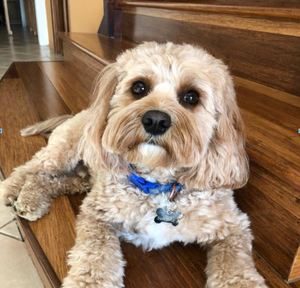
“You don’t begin to know how much love you have for them until you bring them home.
They are high maintenance, but who cares, they really are your baby.”
Nola Cipri, owner of Sundae

“I am both an owner and a breeder of Cavoodles.
Pros are they are beautiful, loving, intelligent and peaceful, non-aggressive dogs. Low to non-shedding and usually don’t have the funky dog smell.
Cons are they have to be groomed every 6 to 8 weeks. As for the price – worth every dollar.
They are the most beautiful dogs I have ever owned. Our family is besotted with our two.
Maria Manley, owner of Holly & Coco
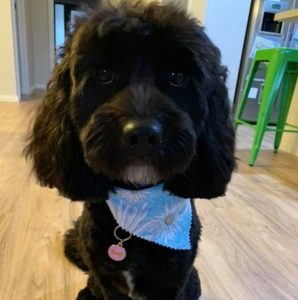
“Cons – terrible recall. Very much like a cat. Pros – far too many to list here, she is my baby even though she picks and chooses to come to her name when it suits her.”
Amber Sharrock, owner of Remy
The Cavoodle Wrap Up
If you are looking for a low-maintenance couch dog, then the Cavoodle probably isn’t for you.
Those willing to put in the work to keep them healthy and groomed, the Cavoodle makes a devoted companion with teddy bear looks who will never want to leave your side.



